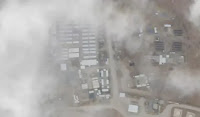It’s also raising questions about whether the US can continue to hit back at Iranian-backed militia groups without seeking congressional authorization.
The Biden administration argues it has successfully contained the Israeli war against the Palestinian militant group Hamas to Gaza, and that there is not a wider conflict. But the sheer number of attacks on US forces points to tensions spinning out of control.
It is already a larger conflict. It’s a question of degrees, Robert Murrett, a retired Navy vice admiral, said. But the fighting is not out of control yet, according to Murrett.
“Calling it a war is probably overstating things,” Murrett, now a professor at Syracuse University, said. “But the tensions, the hostilities that exist between Iran and the US are at the highest level they’ve been for some time.”
The tit-for-tat battles reached a boiling point after a Sunday attack in Jordan, which the US has said likely came from an Iranian-backed militia group in Iraq, Kata’ib Hezbollah. A suicide drone exploded in a housing unit at the Tower 22 base near Iraq and Syria, killing three Army soldiers.
The US also lost two sailors during a covert mission off the coast of Somalia to intercept Iranian missiles bound for the Iranian-backed Houthis in Yemen. While the mission was a success, two sailors died after falling into the rough waters.
The deaths sparked mourning across the US and calls for more action, particularly among Republicans, some of whom urged Biden to strike back inside Iran.
Washington is already deploying significant resources to defend ships in the Red Sea from the Houthis and carry out airstrikes in Yemen and Iraq, none of which have deterred the militia groups from attacking.
Courtesy: The Hill






